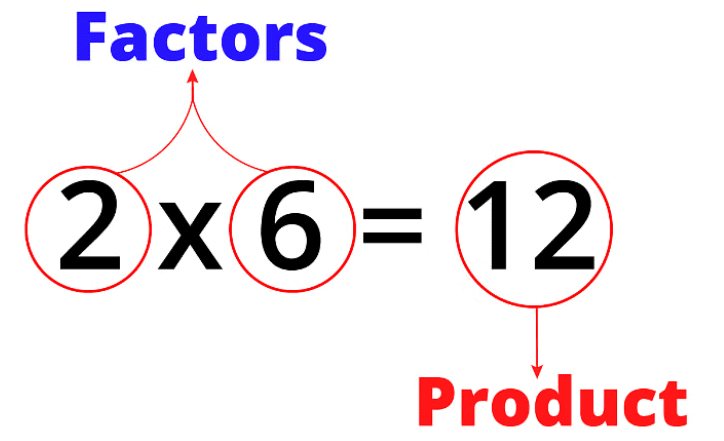Important Formulas: Playing with Numbers | Mathematics for Grade 6 PDF Download
(1) A factor of a number is that number which divides the number exactly.

(2) A multiple of a number is exactly divisible by the number.
(3) Every number is a factor as well as a multiple of itself.
(4) 1 is a factor of every number and is the only number, which has exactly one factor.
(5) Every number other than 1 has at least two factors, namely 1 and the number itself.
(6) A number having no factor other than 1 and the number itself is called a prime number. In other words, a prime number has exactly two distinct factors, 1 and the number itself.
(7) A number having factors other than 1 and the number itself is called a composite number.
 (8) The number 1 is neither a prime nor a composite number, because it has a single factor.
(8) The number 1 is neither a prime nor a composite number, because it has a single factor.
(9) Numbers divisible by 2 are called even numbers.
(10) Numbers not divisible by 2 are called odd numbers.
(11) 2 is the only even prime number.
(12) Every prime number other than 2 is odd, but every odd number is not necessarily a prime number.
(13) Every even number greater than 4 can be expressed as the sum of two odd prime numbers.
(14) Primes occurring in pairs with a difference of two are called twin primes.
(15) Every number other than 1 can be uniquely expressed as the product of prime numbers except for the order of prime numbers.
(16) A number is divisible by –
- 2, if the unit's digit of the number is 0, 2, 4, 6 or 8.
- 3, if the sum of the digits is divisible by 3.
- 4, if the number formed by its digits in ten's and unit's places is divisible by 4.
- 5, if unit's digit is 0 or 5.
- 6, if it is divisible by both 2 and 3.
- 8, if the number formed by its digits in hundred's, ten's and unit's places is divisible by 8.
- 9, if the sum of the digits is divisible by 9.
- 10, if the unit's digit is 0.
- 11, if the difference of the sum of its digits in odd places and the sum of its digits in even places (starting from unit's place) is either 0 or divisible by 11.
(17) The H.C.F. of two or more numbers is the largest number that divides all the given numbers.
(18) The L.C.M. of two or more numbers is the smallest number which is divisible by all the given numbers.
(19) The product of H.C.F. and L.C.M. of two numbers equals their product. This result may not be true for more than two numbers.
(20) The H.C.F. of any two prime or co-prime numbers equals 1.
(21) The L.C.M. of any two prime or co-prime numbers equals their product.
(22) The H.C.F. of two or more numbers is never greater than any of the numbers.
(23) The L.C.M. of two or more numbers is never less than any of the numbers.
(24) The H.C.F. of two or more numbers is a factor of their L. C.M.
(25) If x is a factor of y, then the H.C.F. of x and y is x and L.C.M, of x and y is y.
(26) A number for which the sum of all its factors is equal to twice the number is called a perfect number.
(27) When a number is expressed as a product of prime numbers, factorisation is called prime factorisation.
(28) A common factor is a number that is a factor of two or more numbers.
(29) A common multiple is a number that is a multiple of two or more numbers.
|
157 videos|229 docs|60 tests
|
FAQs on Important Formulas: Playing with Numbers - Mathematics for Grade 6
| 1. What are the important formulas related to Playing with Numbers in Class 6? |  |
| 2. How can playing with numbers help in improving mathematical skills for Class 6 students? |  |
| 3. What are some practical applications of the formulas related to Playing with Numbers for Class 6 students? |  |
| 4. How can Class 6 students use the important formulas related to Playing with Numbers to solve mathematical problems effectively? |  |
| 5. What are some common mistakes that Class 6 students make when using the formulas related to Playing with Numbers, and how can they avoid them? |  |

















